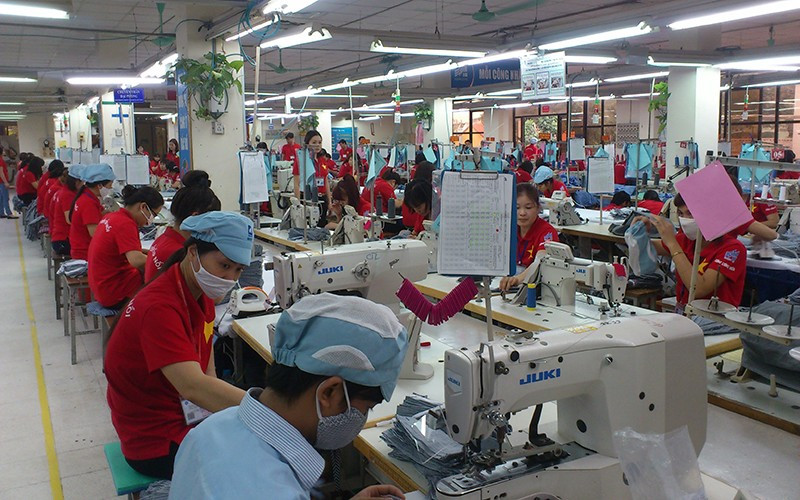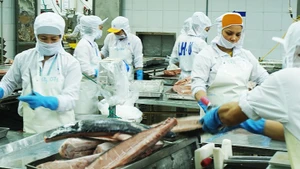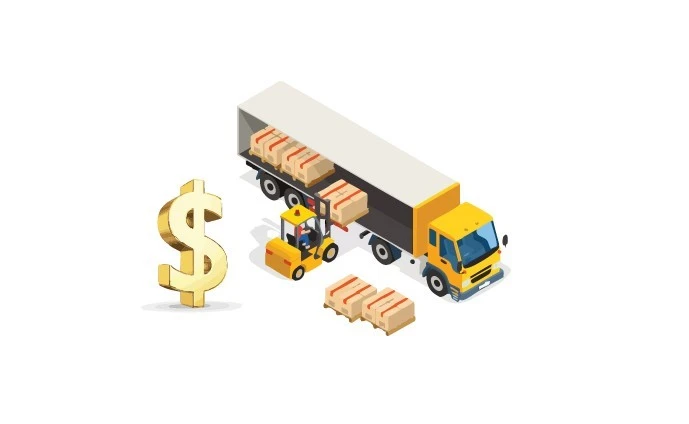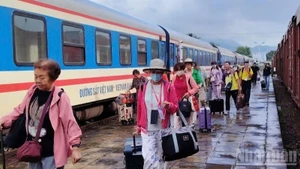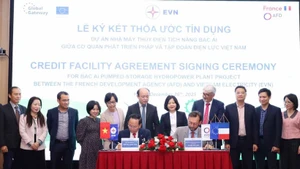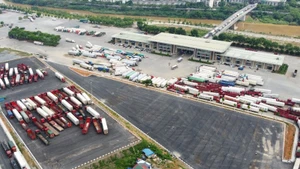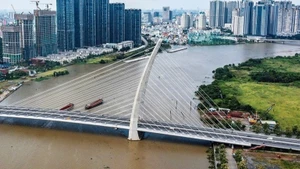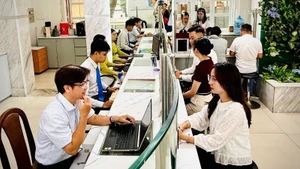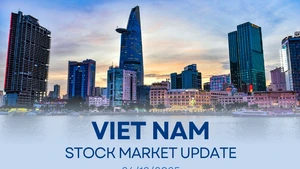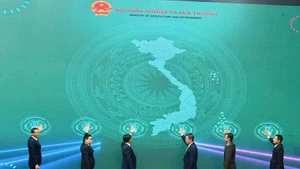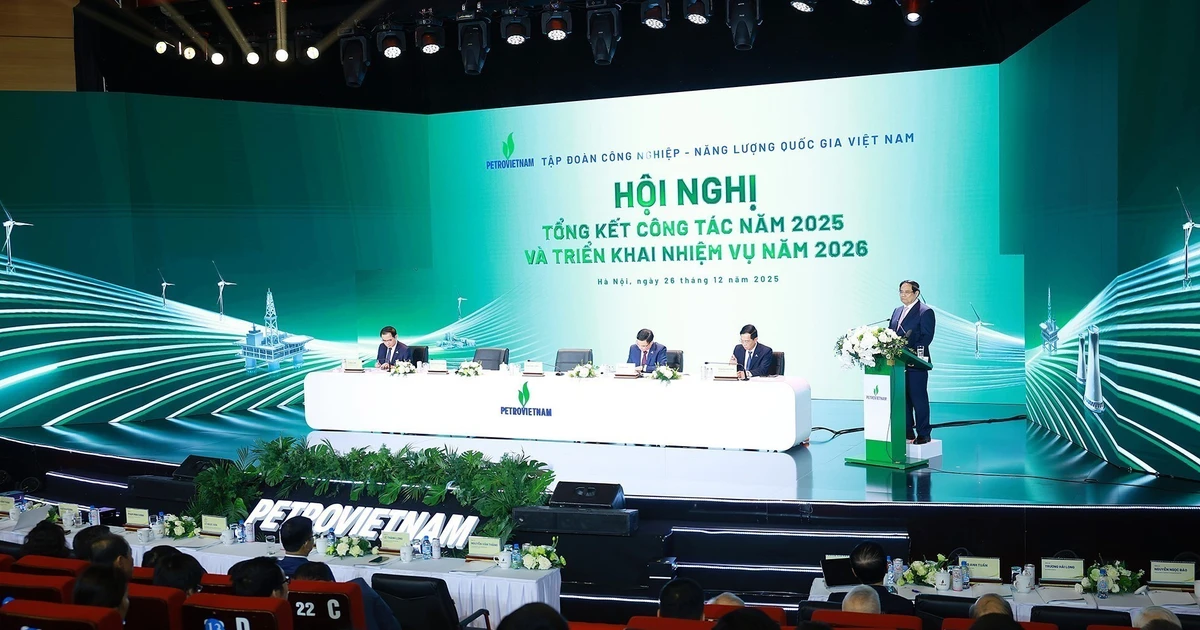In recent years, especially before the COVID-19 epidemic, Vietnam's textile and garment industry had always achieved double-digit growth, with a total export revenue each year reaching tens of billions of USD and ranking in the Top 3 of the world.
However, the industry is currently facing many difficulties as competition is increasingly fierce, the source of raw materials for production is mainly dependent on imports, and while businesses are slow to innovate, there are still about 35% accepting the method of cutting and sewing for hire results in limited added value.
To promote development, businesses are required to diversify raw material supplies, as well as promote the investment and purchase of modern equipment for production.
Reducing pure outsourcing
According to statistics from the Vietnam Textile and Apparel Association (Vitas), in 2023, the total export revenue of textiles and garments reached more than 40.3 billion USD, of which imported raw materials and accessories account for nearly 58%, equivalent to more than 23.2 billion USD, which shows that Vietnam's raw material sources for production are in short supply and weak, and supply cannot meet demand.
Despite accounting for the largest workforce in the chain, with low added value, up to 35% of businesses still choose the "profit-making" production method by cutting and sewing for hire. The above situation exists because they are reluctant to invest in modern equipment, which takes up capital and low operational efficiency.
Referring to this issue, Chairman of the Board of Directors of Hung Yen Garment Corporation (Hugaco) Nguyen Xuan Duong said, according to the ratio in the chain, the first stage from growing cotton to weaving and dyeing to completion accounts for 15% of labour but creates 60% of the value.
The final stage, including distribution, trade, and service, accounts for 5%, but the value is only about 20%. The sewing stage accounts for the largest workforce, with 80% of the total number of workers, but only creates 18-20% of the value.
For example, an average shirt exported to the US market has a price of 6 USD, the cost of raw materials is 3 USD, and processing costs 1.2 USD (including all costs). The cost of boxes, trunks, hooks, bags, etc., plus taxes and export fees is about 1.8 USD.
After deducting the costs, the value only reaches 2-3 cents/product, showing that Vietnamese businesses are only participating in the supply chain at a simple stage, so the value is low.
Similarly, Dr. Hoang Xuan Hiep, Rector of Hanoi University of Textile and Garment Industry, affirmed that through research, hoodies have a selling price of 26.66 EUR, its total profit generates about 5.14 EUR, then 4.2 EUR (accounting for 81.7% of profits) is in the sales stage, with nearly 1 euro divided equally among stages, such as cotton growing, spinning, weaving, dyeing, sewing.
This proves that the added value brought about in the sewing stage is very low, forcing businesses to invest and build systems to gradually participate in the chain, thereby improving value.
According to Dr. Hoang Xuan Hiep, Vietnam's textile and garment industry has been developing very well recently.
Ten years ago, the proportion of hired tailoring accounted for 70-80%, now it has decreased to 35% of pure hired tailoring. The remainder includes about 55% Original Equipment Manufacturing/Free On Board (OEM/FOB), 9% Original Design Manufacturing (ODM), and 1% Original Brand Manufacturing (OBM) methods.
General Director of Garment 10 Corporation Than Duc Viet added that there are currently several businesses doing pure outsourcing, however, besides Vietnam, developed countries such as the US, Europe, Japan, and the Republic of Korea have also done the same before.
In the business development process, the business will develop step-by-step, from low to high. Only after appropriate conditions exist will we consider production methods that create higher value.
For example, on May 10, after processing since the early 1990s, it was decided to switch to FOB production instead of pure processing and move on to making OBM goods. For ODM goods, there are various collections of brands for customers to choose from, thereby bringing even higher value.
However, this requires more investment in finance and high-quality human resources, while also involving more risks.
Sharing the same opinion, Vitas Chairman Vu Duc Giang emphasised that not many businesses still use outsourcing methods, because brands have gradually eliminated intermediaries, and requiring businesses to do it directly.
Therefore, businesses must meet three basic requirements: having a team of designers who can develop models according to brands’ ideas, having proactive financial resources and management ability, and being good at foreign languages to negotiate prices and connect with raw material suppliers globally.
Diversifying supply sources
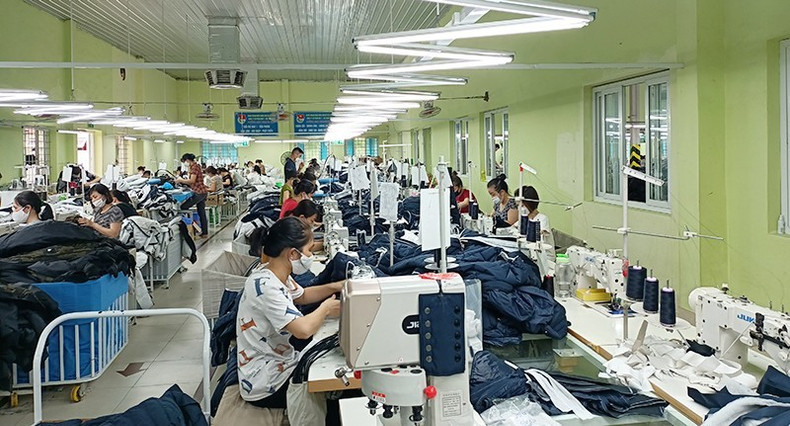 |
| Textile and garment production at Nam Dinh Textile and Garment Joint Stock Corporation. |
Although it is one of the most open economies in the world, Vietnam's participation in global and regional value chains is still limited, not to mention that after the COVID-19 pandemic, some of Vietnam's main export markets have gradually switched to applying more stringent sustainability standards, causing Vietnamese businesses to face difficulties in maintaining their competitiveness, especially those operating in the textile, garment, and leather industries.
The change in production organisation and technology lines will come with increased investment costs while businesses' access to capital is very limited.
Commenting on this issue, Vice President and General Secretary of Vitas Truong Van Cam affirmed that textile and garment is one of the manufacturing industries that has been negatively and heavily affected by the COVID-19 pandemic.
Due to lack of raw materials, many businesses have to reorganise production lines and struggle to handle export orders.
Many garment factories are facing a lack of raw materials, which has severely affected production and exports while increasing the risk of delays in delivering to customers.
In that context, many businesses are focusing on diversifying the supply of raw materials and accessories, building connections with hundreds of suppliers around the world to adapt to changing situations in order to maintain and stabilise their production activities.
According to Pham Van Viet, Chairman of the Board of Directors of Viet Thang Jean Co., Ltd. (Vitajean), in the new current situation, Vietnam’s textile and garment industry needs to make further efforts and devise sound solutions to participate more deeply and effectively in the global supply chain.
Diversifying supply sources and applying digital transformation are considered the keys to building a smart and sustainable supply chain.
It is also necessary to change production and business models, from seeking sustainable supply sources to building non-polluting production processes that mitigate negative impacts on the environment, and distributing environmentally friendly products to consumers.
Vietnamese businesses need to have a long-term thinking about supply chain restructuring and reposition their position.
Specifically, it is necessary to gradually switch from Cut, Make, Trim (CMT) to Original Equipment Manufacturing/Free On Board (OEM/FOB), Original Design Manufacturing (ODM), and Original Brand Manufacturing (OBM) methods.
Data indicates that investing in technology, green production processes or brand building requires not only capital, but also highly qualified human resources as well as a clear and favourable legal framework.
In recent years, many businesses have made bold investments in improving technology to meet the increasing demands of the market.
However, textile and garment businesses still need more support from ministries and sector to increase autonomy in raw materials and accessories, and reduce dependence on imported sources.
In the long term, the State needs to perfect policies on facilitating the development of supporting industries. It is also crucial to further promote the role of trade counsellors abroad to expand import and export markets, and support local businesses to receive technology transfers, thereby catching up with the market trends and increasing businesses’ competitiveness in the global value chain.
